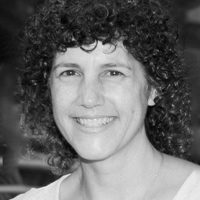Michelle: Welcome everyone to this course today on speech generating devices or SGDs. We are going to look at determining access. We are going to look at how someone can access or control a SGD to use it for its primary function of communication. This is a very exciting area of practice for me. I work with many clients who are non-verbal and who are going to require a SGD to be able to communicate with those around them. We communicate in a lot of different ways, and it is an essential part of our lives. I work with a lot of assistive technology, but there is really nothing more important than being able to communicate, and sometimes that really requires us to put on our thinking hats and use our skills as an OT. During this course, we are going to be talking about a variety of access methods available for SGDs, including direct access, mouse, eye gaze, and switch. We are also going to discuss some of the clinical indicators for each of those, and how we determine which of those access methods is most appropriate for a client needing a SGD.
Communication
We all communicate in many different ways. Verbal communication is easy for us to think about. I am talking to you right now, and hopefully you are listening to me, but we also communicate non-verbally. This is a little tricky in a format such as this, because you cannot see me moving my hands around or watch my facial expressions. You can hear the inflection in my voice, however. There can be quite a bit of non-verbal communication going on. We also have written communication, that includes not only pen and paper, but also texting and other written strategies to communicate information.
If a client is non-verbal, or very difficult to understand, we can sometimes provide an area of technology called: augmentative or alternative communication, AAC. This is a term that you probably already know. Augmentative communication "augments" any existing verbal abilities. Alternative replaces inadequate verbal abilities.
A question you might hear a speech/language pathologist say during an evaluation is: "What percentage of the client's speech can you readily understand?" It is important to evaluate what percentage of communication people who are familiar with the client, like family members, can understand, and what percentage of communication someone, who is not familiar with the client, can understand. Often, I work with clients where maybe I can only understand about 10 percent of what they are saying, and I am used to working with people who are difficult to understand. This is not adequate for successful communication so we need to augment or replace that communication.
A speech generating device, or SGD, is an alternative communication option. These are sometimes referred to by different names, including just communication device or talker. Many of my clients will refer to a speech generating device in this way, but the term, SGD, is really a term that came from Medicare, and is more of a funding-generated term.
There are various access methods available to control these SGDs. These provide a form of speech output, either in a recorded or digitized speech, or synthesized speech. There are other, low-tech alternatives that do not actually generate speech, but instead rely on a communication partner. There are some advantages of these. These strategies are less costly and may provide a temporary solution. Perhaps, this client is in the hospital and accessing their SGD is not very practical. We can provide some low-tech strategies for some quick and dirty communication. These low-tech alternatives can also be used as a backup to the SGD, as with any technology, sometimes these things do break down and maybe are being repaired or replaced. Drawbacks of low-tech alternatives include that the client can only communicate with the assistance of someone else, rather than independently. This is a huge drawback, and something that is very important to keep in mind, particularly if this is the primary means of communication. Vocabulary is also typically more limited than what is available on a SGD. Access options are more limited as well. Clients using low-tech alternatives primarily rely on direct access, eye gaze, or use of a head pointer.
Low Tech Options
One of our common low-tech options is called an E-tran, or E-transfer board. You can see in Figure 1, the client must look at a specific area of the board that represents certain vocabulary.

Figure 1. Overview of E-tran.
